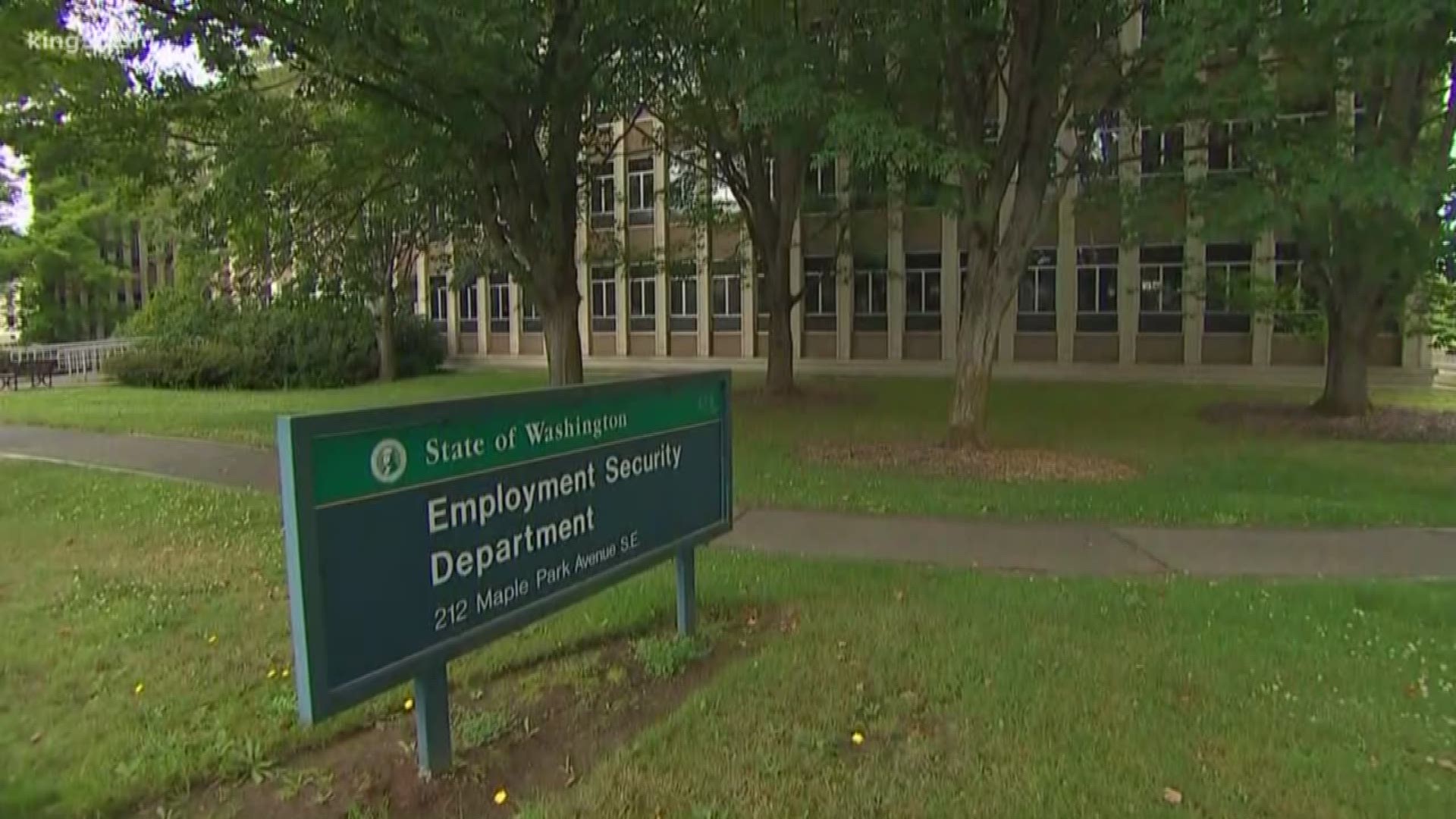State and federal regulators exercise tight control over the workplace practices of Washington employers. Today, Washington small businesses and major industries face a costly and expanding array of regulations at all levels of government.
Washington Policy Center applauds the Governor’s Executive Order (No. 10-06) instructing state agencies to suspend “non-critical” rule development and adoption for 2011.[1] However, the Executive Order (EO) is a temporary band-aid and not a long-term, sustainable solution to the problem of agency rule proliferation.
Not all rules, proposed or existing, are unnecessary. But a balance must be struck between the benefits of regulation and the cost imposed on the economy and society. For example, President Obama recently issued a Presidential Executive Order instructing Federal agencies to consider the impacts of proposed rules on small businesses, and to seek alternative ways to implement rules without imposing a disproportionate impact upon them.[2]
Regulation reform is rightly gaining traction both in Washington state and in Washington, D.C. However, follow-through is of key importance.
The first attempts at addressing small business’ concerns about the impact of high regulatory compliance costs came when Congress passed the Federal Regulatory Flexibility Act in the early 1980s. Washington state policymakers followed suit with a Regulatory Fairness Act soon after.
But the respective acts passed by Congress and the Legislature were not enough. Every president has issued some sort of small business regulatory executive order since the Carter administration. Likewise, Governor Gregoire’s recent EO follows in the steps of other recent governors – Locke (97-02), Lowry (95-05, 94-07, 93-06) and Dixy Lee Ray (80-20).[3]
Rule proliferation continues unabated. According to the Office of the Code Reviser, in 2009 (latest data available) state agencies submitted over 1,500 emergency, proposed or adopted rules. This equated to almost 15,000 pages. Of that, more than 500 rules were adopted or amended, which added over six thousand pages to the state’s books.[4]
The growth of state regulations is exacerbated by regulations imposed by federal agencies. And according to the Small Business Administration, federal regulations carry a 35 percent higher compliance cost for small businesses than for larger firms. This is especially true for small businesses complying with environmental or tax regulations.[5]
Each regulation by itself is unlikely to break a business. But because much of the cost of complying with government regulations is the same regardless of the size of the business, compliance costs should be thought of as a high-fixed cost and low-marginal cost of doing business. Larger companies can spread the cost of compliance across a larger base of revenue and employees than can a small business, allowing large companies to benefit from economies of scale.
The economies of scale problem is why policymakers must focus on alleviating, where practicable, the cost of regulations as it impacts small businesses. Not doing so will mean that larger businesses stand to gain a competitive advantage over their small business counterparts because large businesses have more resources to handle the high fixed compliance costs.
While Washington’s 2011 Legislative Session convened only recently, lawmakers have introduced several pieces of legislation to address regulatory reform. They are listed below (bill descriptions from www.WashingtonVotes.org).
HB 1068 – Introduced by Rep. Barbara Bailey on January 10, 2011, requires the Governor’s signature on any significant rule approved by state agencies where the head or governing body is appointed by the Governor.
HB 1150 – Introduced by Rep. Norma Smith on January 13, 2011, extends the time in which a small business may correct a violation of a state law or agency rule from two to seven days. (In 2010 the Legislature passed HB 2603, which created a “two business day” window of compliance).
HB 1151 – Introduced by Rep. Norma Smith on January 13, 2011, limits rule-making authority for state agencies. Any authority granted by the Legislature to a state agency is limited to the minimum amount of action necessary to carry out the clear legislative intent in the context of foreseeable circumstances. Beginning August 1, 2011, state agencies may only adopt rules derived from a specific grant of legislative authority.
HB 1156 – Introduced by Rep. Ed Orcutt on January 13, 2011, suspends state agency rule making until the later of July 1, 2014, or when the economic and revenue forecast council reports for three consecutive quarters that state revenue collections have increased above the official forecast. This act takes effect immediately.
HB 1341 – Introduced by Rep. David Taylor on January 19, 2011, requires that significant state agency rules be adopted prior to December 1 of each year and not take effect prior to the regular adjournment of the following year’s regular legislative session. This also requires such rules to be signed by the Governor.
HB 1671 – Introduced by Rep. Jason Overstreet on January 27, 2011, implements the “Regulatory Fairness Act of 2011.” Requires state agencies to determine the economic impact of new rules and legislative approval of those rules if the cost exceeds $1,000 to an individual, $5,000 to a business or the loss of one or more jobs in Washington. Also allows for individuals to petition superior court to mandate agencies comply with this law.
SB 5500 – Introduced by Sen. Michael Baumgartner on January 27, 2011, requires agencies to consider regulatory cost mitigation recommendations from small businesses or small business advocates and post any required Small Business Economic Impact Statements on the agency’s web site.
Recently, the Legislature has made inroads into helping ease the small business regulatory burden. In 2009, the legislature passed SSB 5042, which provides a waiver of penalties for first-time paperwork violations by small businesses. A year later, the legislature passed HB 2603, which gives small businesses a “two business” day window of opportunity to comply with minor agency regulations before fines/penalties can be assessed.
Further Regulatory Reform Recommendations
- Mandatory sunset provisions on agency regulations – Avoiding proliferation of agency rules is critical to maintaining and improving Washington’s competitive advantage. Agencies should have to justify the need for the regulations, or at least regulations deemed “significant,” on the books every 5-7 years.
- Enable the Legislature to vote up/down on significant rules – The Legislature has little to no control or oversight of the agency rule making process. The Joint Administration Rules Review Committee is the closest oversight entity the Legislature possesses and JARRC’s oversight is problematic and weak at best. The entire Legislature should have the option of approving or rejecting “significant” rules.[6]
- Convert the Office of Regulatory Assistance to an “office of regulatory review and reform” – Having an independent third party review which agency rules are still useful and serving a purpose and which ones can be repealed would help expedite the reform process.
- Reject excessive grants of legislative authority to agencies – Too often the Legislature gives broad authority to a state agency to conjure rules necessary to implement policy objectives laid out in statute. This has lead to sweeping rule makings that can fall outside of the legislative intent. Rules implementing statutes should be submitted to legislative committees for review and/or approval prior to implementation.
- Implement a supermajority requirement for “significant” mandates – Rules that have a significant impact on the economy (often categorized as more than a $100 million impact) should be submitted to the legislature and meet a 2/3 supermajority in order to move forward with implementation.
None of these bills or recommendations offers a silver-bullet solution to the regulatory compliance cost problem. The reality is that regulatory reform will not come from a single legislative source, but from several concerted efforts focusing on improving different aspects of Regulatory Fairness Act.
Additional Resource: WPC Policy Brief "Regulatory Reform: Strengthening Washington’s Regulatory Fairness Act."
Carl Gipson is Director of the Center for Small Business at Washington Policy Center, a non-partisan independent policy research organization in Washington state. Nothing here should be construed as an attempt to aid or hinder the passage of any legislation before any legislative body.
Download a pdf version of this Legislative Memo here.
[1] See Executive Order 10-06, “Suspending Non-Critical Rule Development and Adoption.” at: https://governor.wa.gov/execorders/eo_10-06.pdf
[2] The Executive Order has yet to be printed in the Federal Register but the text is available at: https://www.whitehouse.gov/the-press-office/2011/01/18/improving-regulation-and-regulatory-review-executive-order
[3] See Executive Orders Archive at: https://governor.wa.gov/execorders/archive.asp
[4] See “Agency Rule-Making Activity,” Office of the Code Reviser, at: https://www.leg.wa.gov/CodeReviser/Documents/rulactiv.pdf
[5] Nicole V. Crain and W. Mark Crain, “The Impact of Regulatory Costs on Small Firms,” U.S. Small Business Administration Office of Advocacy, page 7, at: https://www.sba.gov/sites/default/files/rs371tot.pdf
[6] As originally written in the Regulatory Fairness Act, significant rules are often referred to as “having more than a minor cost on twenty percent of the businesses in all industries or ten percent of the businesses in one industry.” Governments often use alternative ways of measuring the economic impact, such as monetary or jobs lost, etc.




